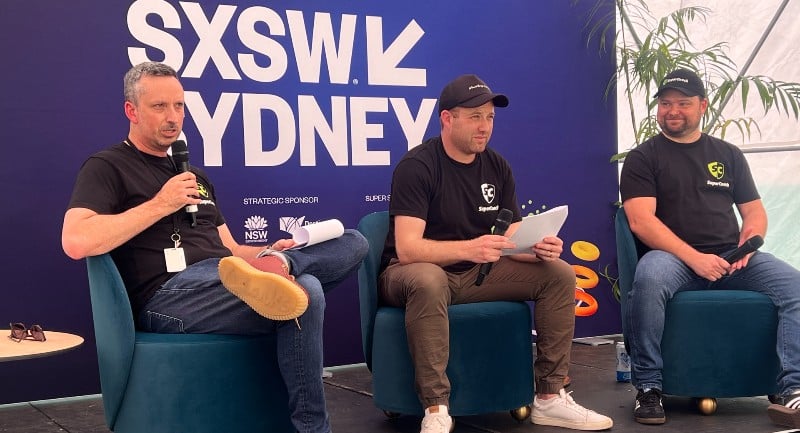There has been a lot of research into the male loneliness epidemic that has been identified in recent years. Recent research from Mentoring Men, a service that connects men with trained mentors, identified that more than half (53 per cent) of men aged 35-50 in NSW, Victoria, and the ACT meet the criteria for loneliness. A further 47 per cent of men reported feeling that a lack companionship some of the time.
Fantasy sports isn’t the complete answer, but for a lot of men each week, it is providing a sense of mateship and connection that is surely helping a lot of guys out there.
SuperCoach NRL Editor Tom Sangster appeared at a SXSW panel on Friday, alongside News Corp Australia’s Head of Fantasy Sports Paul Zines and News Corp Australia’s Head of Fantasy Content Nathaniel Bane.
Sangster told the crowd that fantasy sports through the News Corp Australia platform SuperCoach has kept his high school friends together: “We get to see each other probably three times a year, and they’re all related to SuperCoach. We’ve got our AGM, which is just an excuse to get away from the kids. And Season 3, we’ve got the draft night.
“We used to see each other every day at school, but now we see each other three times a year and it’s all to do with SuperCoach.”
The sense of mateship was echoed by Zines: “It’s literally about the sense of connection. And 10 years later, these are some of my best friends for life. You know, weddings, best men.”
SuperCoach and fantasy sports goes beyond just bringing mates together. This is a $45 billion industry globally. In Australia, SuperCoach has reported seeing a doubling of fantasy players since 2021. Bane reports that there are over 2 million Australians who play, spending an average of 62 minutes every single week managing their teams.
Thanks in no small part to the social element intwined in the platform, SuperCoach has started to have an impact on the athletes and the games itself.
During the panel they discussed Storm player Ryan Papenhuyzen. He had an injury, with the club keen to keep it quiet. But knowing that there is a large, rabid fanbase of SuperCoach players out there wanting the inside word on what would impact their lineups for the week ahead, he took to his podcast and talked about his injury.
As Sangster said on the panel, for a player earning 900k a year in salary, they are eager to stoke their outside business interests where they can double their income. High traffic spikes on a podcast episode help them get there.
There is also a growing audience for women engaging in fantasy sports too.
In a conversation with Mediaweek after the panel, Bane talked about the rise of women playing and how they are working to grow that audience. He predicts that, currently, around 10 per cent of the SuperCoach audience is female. And most of those female players are playing in fantasy teams alongside men.
“We would definitely love it to be a lot more. In terms of what’s going to drive them to want to play more, we’re still trying different formats to try and get them to come and play the games. We don’t necessarily believe just adding women’s sports is going to drive women’s audience. One of the guys in our league, his wife plays in our league as well. She’s won two years in a row,” he said.
SuperCoach is also having an impact on sports journalism. A lot of sports journos play themselves, but many will look to SuperCoach fandom to keep a competitive edge themselves. It is also having an impact on content published, where a minor story may have huge ramifications for the SuperCoach audience.
“Our journos know that even if it’s just a minor player, it could be really big. They can look up who’s popular in SuperCoach and know that if they do a story on someone, it could be the most random person that no one even knows. He could be a really popular SuperCoach player. A general NRL fan wouldn’t read it. But they know that if they’re popular in SuperCoach, it’ll go off,” Sangster told Mediaweek.

